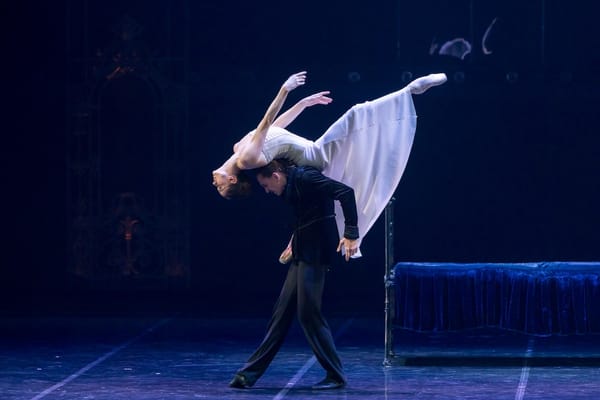Effective Practice Techniques for Young Musicians
From building consistent routines to using slow practice, visualisation, and varied repetition, these proven techniques help young musicians practise smarter, stay motivated, and develop lasting skills for confident, expressive performance.

For many young musicians, the act of practising is a double-edged sword: it is essential for progress, yet often the most challenging part of their musical journey. While lessons can be inspiring and performances exhilarating, the daily routine of working alone with an instrument can feel repetitive or even discouraging without the right approach. Effective practice is not about the number of hours spent, but about how those hours are used. By combining mindful techniques with structured routines, young musicians can maximise their progress, deepen their musical understanding, and enjoy the process along the way.
1. The Importance of a Routine
Consistency is the bedrock of musical improvement. Just as an athlete trains regularly to maintain peak performance, a musician needs frequent contact with their instrument to reinforce muscle memory, refine technique, and develop artistry. For young players, setting a fixed practice time each day helps turn practice into a habit rather than a chore.
Morning practice can work particularly well for younger children before the demands of school or homework take over. For teenagers, an evening session may be more realistic, provided mental fatigue from the day does not hinder focus. Even short sessions – 20 to 30 minutes for beginners – can be highly effective if done daily.
A written practice timetable, pinned somewhere visible, reinforces commitment and gives a sense of achievement as tasks are ticked off. Parents can support this process by helping to maintain a calm, distraction-free space for music-making.
2. Setting Clear Goals
Aimless practice can be frustrating. Instead, each session should have one or two clear, achievable objectives. Goals might be technical, such as mastering a tricky fingering, or musical, such as shaping a phrase with better dynamics.
Breaking down long-term ambitions into smaller milestones makes progress tangible. For instance, rather than attempting to perfect an entire piece at once, a young violinist might decide:
- Monday: Work on the intonation of bars 12–20.
- Tuesday: Focus on bow distribution in the same passage.
- Wednesday: Combine intonation and bowing, then play through.
This kind of segmentation reduces overwhelm and builds confidence as each step is mastered.
3. Slow Practice: The Secret Ingredient
One of the most common mistakes young musicians make is practising too quickly, too soon. This often results in ingraining errors that are harder to correct later. Slow practice allows the brain and muscles to coordinate efficiently, ensuring that every note and movement is intentional.
When working on a new piece or difficult passage, slowing the tempo to half speed or even less can make a dramatic difference. It gives the mind space to process fingerings, bowings, breathing, or articulation, and ensures accuracy before speed is added. Many professionals return to slow practice regularly, even with repertoire they have performed countless times.
4. The Power of Repetition – With Variation
Repetition is crucial for learning, but mindless repetition can quickly become counterproductive. Instead of playing the same four bars identically twenty times, try varying the approach:
- Alter the rhythm to challenge coordination.
- Play staccato instead of legato, or vice versa.
- Focus solely on dynamics for a run-through.
By engaging the brain in different ways, the musician keeps concentration sharp and strengthens their adaptability in performance situations.
5. Recording and Listening Back
The act of recording oneself is both enlightening and humbling. Young musicians often have a very different perception of how they sound in the moment compared to what an audience hears. Listening back reveals nuances in tone, balance, intonation, and timing that can be missed during playing.
Encourage students to record a short passage at the start and end of the week to track improvement. This also builds self-assessment skills – a vital part of becoming an independent musician.
6. Mental Practice and Visualisation
Not all practice needs to happen with the instrument in hand. Mental rehearsal – imagining the physical sensation of playing, hearing the music internally, and visualising the score – can be highly effective, especially for memorisation and performance preparation.
For example, a pianist might close their eyes and picture their hands moving across the keys while mentally hearing every note. A flautist could imagine the sensation of breath control and finger placement without blowing a single note. Studies have shown that this form of practice can activate many of the same neural pathways as physical playing, strengthening memory and confidence.
7. Interleaved Practice: Mixing It Up
Young musicians often fall into the habit of blocking their practice – spending long stretches on one piece before moving to the next. While this can feel productive in the moment, research in motor learning suggests that interleaved practice – alternating between different pieces or skills in shorter bursts – can improve long-term retention.
For example:
- Ten minutes on scales and arpeggios.
- Ten minutes on sight-reading.
- Ten minutes on the main repertoire.
- Return to scales to finish.
This variety keeps the mind engaged, prevents fatigue, and ensures that multiple skills are reinforced daily.
8. Using a Metronome – and Knowing When to Put It Away
The metronome is a friend, not a foe. It is invaluable for developing steady rhythm and gradually increasing speed. Young musicians should learn to start slowly with the metronome, ensuring every note is placed with precision before nudging the tempo upward in small increments.
However, music is not meant to be mechanical. Once a passage is secure, the metronome should be set aside to allow for natural phrasing, rubato, and expression. The goal is to internalise pulse without becoming rigid.
9. The Role of Scales and Technical Exercises
Scales, arpeggios, and etudes are the musical equivalent of physical training for athletes. They strengthen fingers, improve coordination, and build a solid foundation for tackling more complex repertoire. Yet, many young players treat them as a warm-up to be rushed through.
Encourage students to treat technical work as music in its own right: vary dynamics, experiment with different articulations, and aim for beauty of tone even in the simplest exercises. A beautifully played scale can be as satisfying as a well-executed concerto passage.
10. Rest and Reflection
Paradoxically, some of the most important progress happens away from the instrument. The brain needs time to consolidate what has been learned, and muscles need rest to avoid strain. Short breaks during practice sessions – five minutes after every twenty to thirty – can improve focus and prevent injury.
Similarly, reflection after practice is valuable. Taking a minute to jot down what went well, what needs improvement, and what to tackle next time creates a sense of purpose and continuity.
11. Motivation and Enjoyment
For younger children especially, enjoyment is crucial to sustaining long-term engagement with music. This does not mean avoiding hard work – rather, it means balancing disciplined practice with moments of pure fun.
This might include:
- Playing favourite pieces or improvising at the end of a session.
- Duetting with a friend, parent, or teacher.
- Learning short, playful pieces alongside more demanding repertoire.
Positive reinforcement – whether from a teacher’s praise, a parent’s encouragement, or a personal sense of achievement – goes a long way in building confidence and resilience.
12. Preparing for Performance
Practising for performance requires a slightly different mindset from everyday study. Young musicians should simulate the conditions they will face on stage: playing through entire pieces without stopping, wearing concert clothes, and even bowing at the end.
It is also useful to perform for small audiences – family, friends, or classmates – to build stage confidence gradually. Learning to manage nerves is as much a part of musicianship as mastering scales. Techniques such as deep breathing, positive visualisation, and focusing on the joy of sharing music can help channel adrenaline into energy rather than anxiety.
13. Involving Parents – Wisely
For younger musicians, parental involvement can be a double-edged sword. Support and encouragement are vital, but excessive supervision can lead to tension or loss of autonomy. Parents should aim to create an environment conducive to practice, help with scheduling, and attend performances – but allow the child to take ownership of their musical journey.
If offering feedback, it should be constructive and specific (“I liked how you played the soft part so gently”) rather than vague (“That was nice”). This reinforces good habits without undermining the teacher’s guidance.
14. When Progress Feels Slow
Every musician encounters plateaus – periods where improvement seems minimal despite effort. For young players, these can be disheartening. It is important to recognise that plateaus are a natural part of the learning curve and often precede a breakthrough.
In such times, changing the approach – working on new repertoire, experimenting with a different practice order, or focusing on a different skill – can refresh motivation. Teachers can also offer reassurance by pointing out subtle improvements the student may not notice themselves.
Practice as a Lifelong Skill
Learning to practise effectively is as valuable as learning to play an instrument. It develops discipline, patience, and problem-solving abilities that extend far beyond music. For young musicians, mastering the art of practice early sets the stage for a lifetime of musical growth and enjoyment.
By combining structure with flexibility, discipline with creativity, and hard work with moments of play, practice can become not just a duty, but a source of daily satisfaction – a time to explore, to challenge oneself, and to connect deeply with the language of music.





